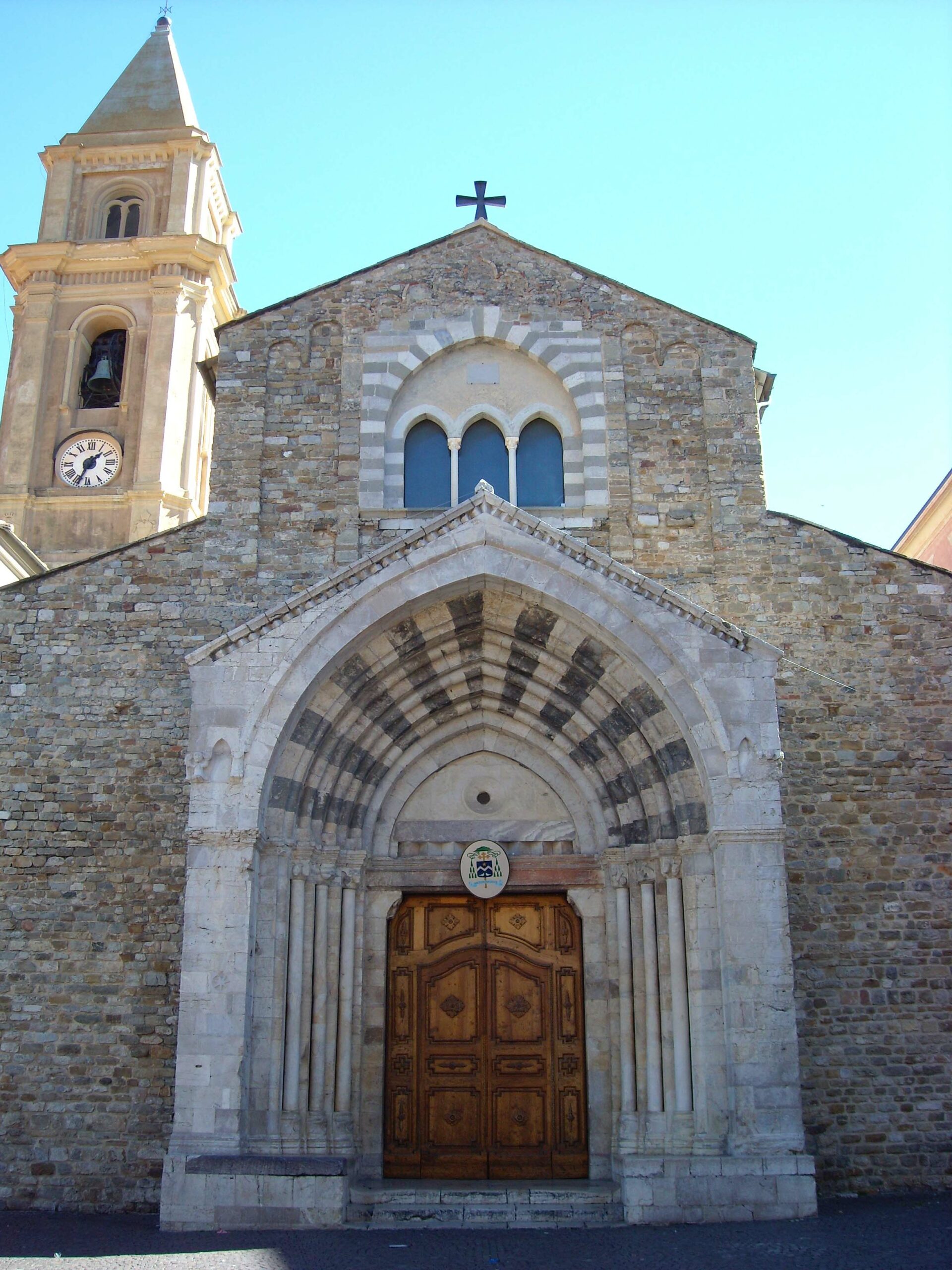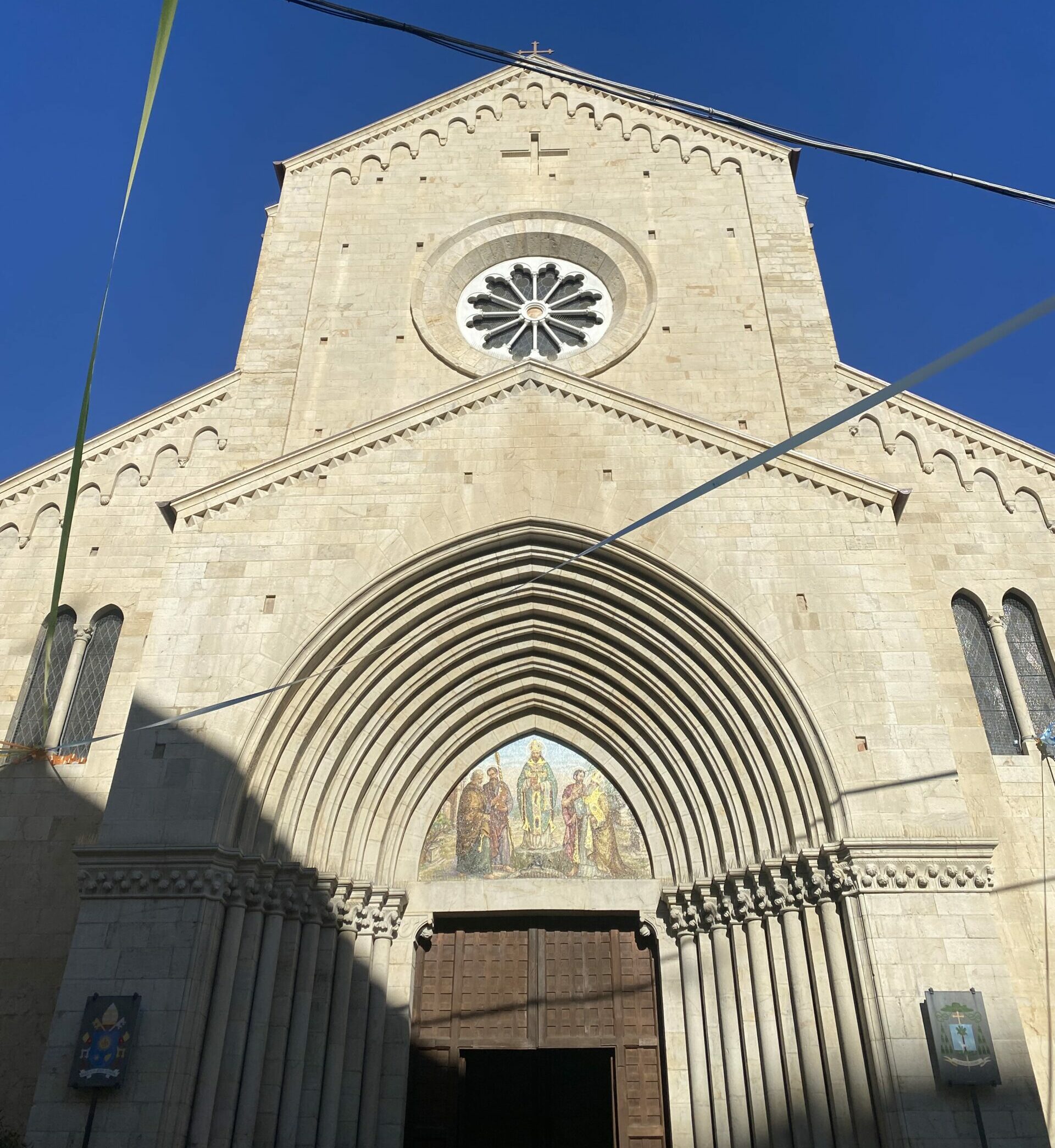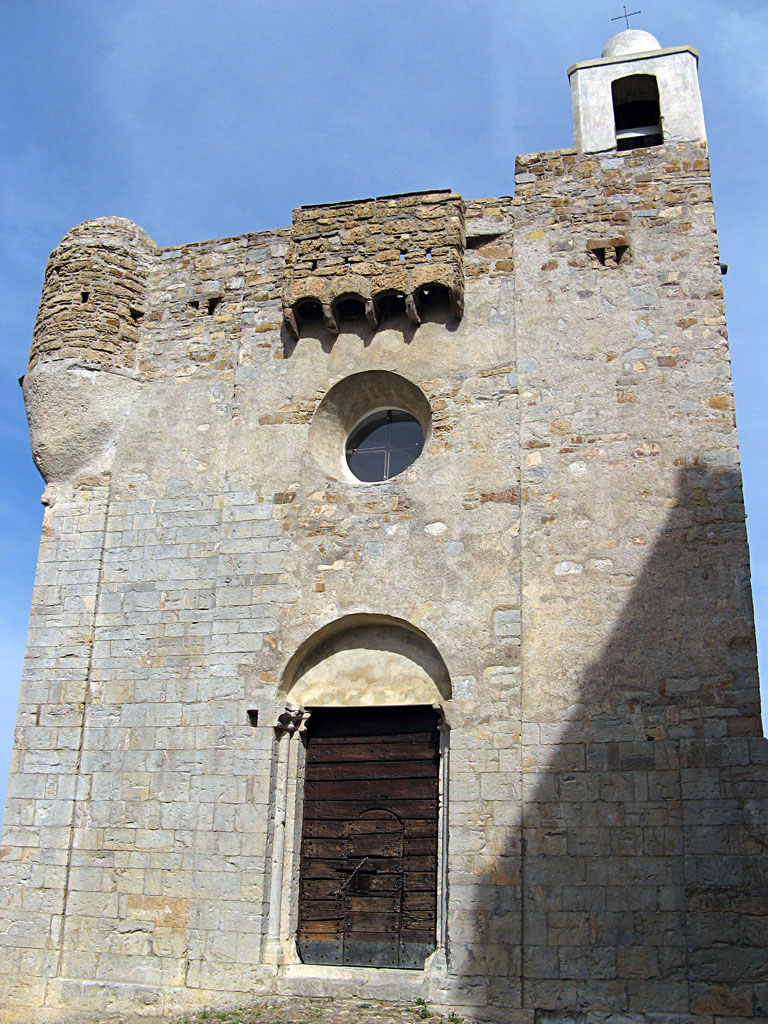On the trail of the Romanesque in the Riviera of Flowers
On the trail of the Romanesque in the Riviera of Flowers
The Romanesque era evokes a period of profound religious zeal, and of carved stone, of which traces can be found on the Riviera, from the more famous buildings on the coast to the many examples of minor Romanesque structures scattered inland. These have been enhanced by the crossborder ITINERA ROMANICA+ (Romanesque Itineraries+).
Altered over the centuries for many different reasons, many Romanesque churches have undergone successive restorations. Thus each one is not simply what it appears to be, and layer by layer, the stones reveal surprises. This is true for San Michele at Pigna, Sant’Ampelio at Bordighera, for the Montegrazie Sanctuary at Imperia or that of Santa Maria Maddalena at Lucinasco, but also for the mountain Romanesque churches of Vessalico and Pornassio and that of the Valle Arroscia (Arroscia Valley) with Ranzo and Calderara.
Cathedral of the Assumption, Ventimiglia
The Cathedral of the Assumption in Ventimiglia Alta, with the adjacent baptistery, is the most significant civic monument of the Romanesque age, one of the best known in Liguria. It was built on the ruins of an ancient church and transformed into the current large three-nave basilica between the eleventh and thirteenth centuries. Inside a Roman plaque recalls the goddess Juno, perhaps indicating the early presence of a temple.
The crypt houses the relics of San Secondo, to whom the cathedral was dedicated.

Co-cathedral of San Siro, Sanremo

Built on the foundations of an earlier Christian church, in the heart of San Remo, San Siro is a fine example of a fusion of Romanesque and Gothic thirteenth century styles. Over the centuries, due to damage and bombing, it was renovated and rebuilt in some sections, involving a series of restorations that in the twentieth century revealed its ancient and imposing facade. The church and bell tower recall the chapters of this troubled history through their details and decoration.
Santa Maria of Canneto, Taggia
The Benedictine monastic order left its imprint everywhere on the Riviera, including in the area’s religious architecture, which reveals the ancient signs of the Romanesque. Taggia, medieval pearl, has an example of the tenth century in its Benedictine church of Santa Maria of Canneto, outside the walls of the ancient road to Badalucco. Its origin is evident in the bell tower with its series of single and mullioned windows, even though the church has undergone several alterations.
Inside there are archeological excavations dedicated to the twelfth century crypt and a series of sixteenth century frescos by Giovanni and Luca Cambiaso.

San Giorgio, Montalto

The ancient church of San Giorgio, situated in the midst of olive trees, was the parish church of Montalto and Badalucco until 1618. Several artistic styles are blended in a stone building that reveals its Romanesque-Gothic origins with the medieval structure in three naves, remodelled during the fourteenth century. In the interior, a series of fourteenth century frescos depict the Saints Apostles and St. George (San Giorgio). A leap to the sixteenth century allows you to appreciate the altar piece of San Giorgio signed by Ludovico Brea which today has been fully restored and is displayed in the parish church of San Giovanni.
The Church-Fortress of San Pietro,
Lingueglietta
This is an example of a unique rather than a rare example of a Romanesque religious building being transformed into a defensive structure: the church-fortress of San Pietro di Lingueglietta stands out against the Valle del San Lorenzo (San Lorenzo Valley), and it is possibly for this reason that in the 1500s it was decided to adapt the ancient thirteenth century building which was regarded as a parish into a fortress.
The danger was invasions by pirates: once deconsecrated, the church was equipped with four watch towers on the corners of the roof. A unique monument, which alternates with the typically adorned Romanesque watchtowers, still visible today.

San Giorgio, Torrazza

A single nave, arches and rectangular columns on the exterior: the signs of the Romanesque are evident in the parish church of Torrazza – a district of Imperia – named for San Giorgio. A seventeenth century inscription announces its consecration, which took place on 19 May 1001, but signs of its ancient origins speak for themselves: the apse, the exposed stones and decoration have resisted subsequent restorations, and date back to the twelfth century.
The Romanesque in the Dianese area
Diano Castello and Cervo retain examples of the Romanesque. The Santa Maria Assunta of Diano Castello church, with its fifteenth century frescos, is today embedded among the houses, the apse evident with its single lancet windows, a clear reference to the twelfth and thirteenth centuries, and its stone facade. In nearby Cervo, the Oratorio of Santa Caterina was commissioned in the thirteenth century by the Knights of Jerusalem as a parish Church dedicated to San Giovanni. It was turned into a parliament, and today, now that it has been deconsecrated, it is a cultural centre.


